Lesson: Dance Pad Mania
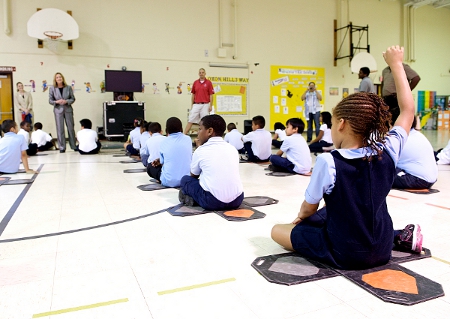
(Lesson from PBS’ Design Squad Nation. Illustrations by Marty Smith. Download the original lesson in pdf form. Find more activities like this in the Design Squad Educator’s Guide.)
Summary
In this lesson, pairs of students in grades 4 to 7 will learn about the engineering design process and electrical circuits by building a dance pad that sounds a buzzer or flashes a light when stepped on.
Grade level: 4 – 7
Time: 40 – 60 minutes
Learning Objectives 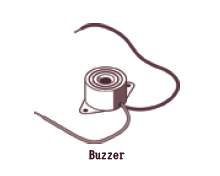
After doing this activity students should be able to:
- Understand electrical circuits
- Troubleshoot broken connections
- Select materials appropriate for their designs
Learning Standards
National Science Education Standards
- Electricity in circuits can produce light, heat, sound, and magnetic effects. Electrical circuits require a complete loop through which an electrical current can pass. [Grades K – 4]
- Some objects occur in nature; others have been designed and made by people to solve human problems and enhance the quality of life. [Grades K – 4]
- Electrical circuits provide a means of transferring electrical energy when heat, light, sound, and chemical changes are produced. [Grades 5 – 8]
- Communicate a problem, design, and solution. Student abilities should include oral, written, and pictorial communication of the design process and product. [Grades K – 4]
International Technology Education Association 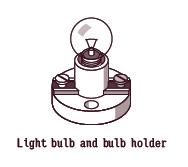
- The Nature of Technology 1,2
- Technology and Society 6
- Design 8,9,10
- Abilities of the Technological World
Materials
- 1.5 volt AA battery
- AA battery holder (optional)
- Aluminum foil
- Light bulbs that can run on a 1.5-volt AA battery *
- Bulb holders for light bulbs (enough for half the group) *
- Buzzers (enough for half the group) *
- 2 11-by-17-inch sheets of corrugated cardboard (per team)
- Duct tape
- Electrical wire (22-gauge works well)
- Plastic wrap
- Scissors
- Wire strippers
* Design Squad source guide suggests the following websites for ordering large quantities or online purchases: Bulbs and holders available at Home Science Tools & Radioshack; two-wire lead buzzers available at APC International, Item #KPI-221OL, reference code WGBH SQ2124200.
Procedure 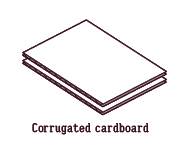
Note: Design Squad’s Hidden Alarm is a useful pre-activity for exploring electrical circuits.
1. Introduce the challenge, brainstorm, and design. (10 mins)
Begin by noting that a dance pad is basically an electrical circuit – with a power source, materials for conducting electricity, and something that uses the electricity — the buzzer or light. Then ask:
- How do dance pads, such as Dance Dance Revolution®, Feet of Fury™, or “Pump It Up”® work? (A dancer stands on a floor pad with a grid printed on it and watches a screen, which tells him or her which grid square to step on. The screen gives the dancers a series of steps to complete, and a computer scores how accurately the dancer does the moves.)
- What are the important parts of these kinds of pads? (Wires, switch, battery, screen, computer, buzzer, and lights.)

- Let’s brainstorm some designs. How could aluminum foil, cardboard, and plastic wrap be useful for building a dance pad? Where will the switch and battery go? What materials can make the pad sturdy? (Foil conducts electricity. Cardboard can be used as a base or frame or folded to help make a switch. Plastic wrap is elastic, and its flexibility can be useful for making a switch.)
Have students sketch their ideas in their design notebooks.
2. Build, test & redesign (40 minutes)
Organize students in teams of two and distribute the Challenge Sheets – pdf (English) or (Spanish). Have half the teams make dance pads buzzers, half with light bulbs. Help kids debug the following common items:
- A buzzer or light doesn’t work. (Have kids check for a broken connection or a switch that doesn’t close or open properly. Also make sure buzzer wires are attached to correct battery terminals.)
- The pads keep breaking. (Encourage kids to make their pads sturdy enough to withstand all the stomping.)
- Something needs fixing or adjusting. (Remind students to provide easy access to the key parts.)
3. Discuss what happened. (10 minutes) 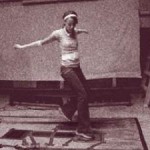
Have students show each other their pads and talk about any problems they had and how they solved them.
Photo: DS contestant dance pad.jpg ©2006 WGBH Educational Foundation
To emphasize the key themes in this design challenge — circuits and using materials suitably — ask such questions as:
- How is your Dance Pad Mania pad similar to your Hidden Alarm? (It has a circuit; it uses a switch; it converts electrical energy to sound or light; it uses similar materials.)
- What did you do to make sure that your pad would survive being stepped or jumped on?
- What’s an example of how brainstorming helped you come up with a design idea for your dance pad?
Modifications
- For younger students— Encourage a group brainstorm. Do the activity Electric Highway and Hidden Alarm, from Design Squad Nation, or Lights On!, TeachEngineering.org’s hands-on introduction to circuits, to allow kids to become familiar with circuits before moving on to Dance Pad Mania. Younger kids may need help stripping wires. Have some wires prepared ahead of time. Younger kids may have difficulty tearing duct tape; have pre-cut pieces ready ahead of time. Make the battery holder option mandatory.
- For older students— Challenge them to make a dance pad that has both a light and a buzzer. Or make a dance pad that uses two batteries, two lights, or two buzzers.
Additional Resources
Dance Pad Mania challenge pdf: student handout (English) or (Spanish), Educator notes in English.
Video Resources
- Design Squad Episode: Bodies Electric The teams try to create a movement-activated sound and light show for the moves and grooves of hip-hop artist, Wyatt Jackson—27:30
- How Does a Fuse Work? See how a fuse—a thin piece of metal—protects a circuit. If more electricity
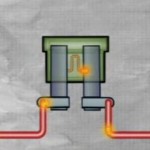 flows than the fuse is designed for, the fuse heats up so much that it melts. This opens a gap in the circuit, which stops the flow of electricity and prevents the circuit’s more expensive components from melting—0:41
flows than the fuse is designed for, the fuse heats up so much that it melts. This opens a gap in the circuit, which stops the flow of electricity and prevents the circuit’s more expensive components from melting—0:41
Fuse illustration ©2008 WGBH Educational Foundation
Series and Parallel Circuits. University of California, Irvine student YouTube video – 1:17
Design Squad and logo are trademarks of WGBH Educational Foundation. Design Squad is produced by WGBH Boston.
Filed under: Class Activities, Grades 6-8, Grades 6-8, Grades K-5, Grades K-5, Lesson Plans
Tags: circuits, Design Squad, Design Squad Nation, Electrical, Electrical Engineering, Engineering Design, Engineering Design Process, Fun & Games, games








